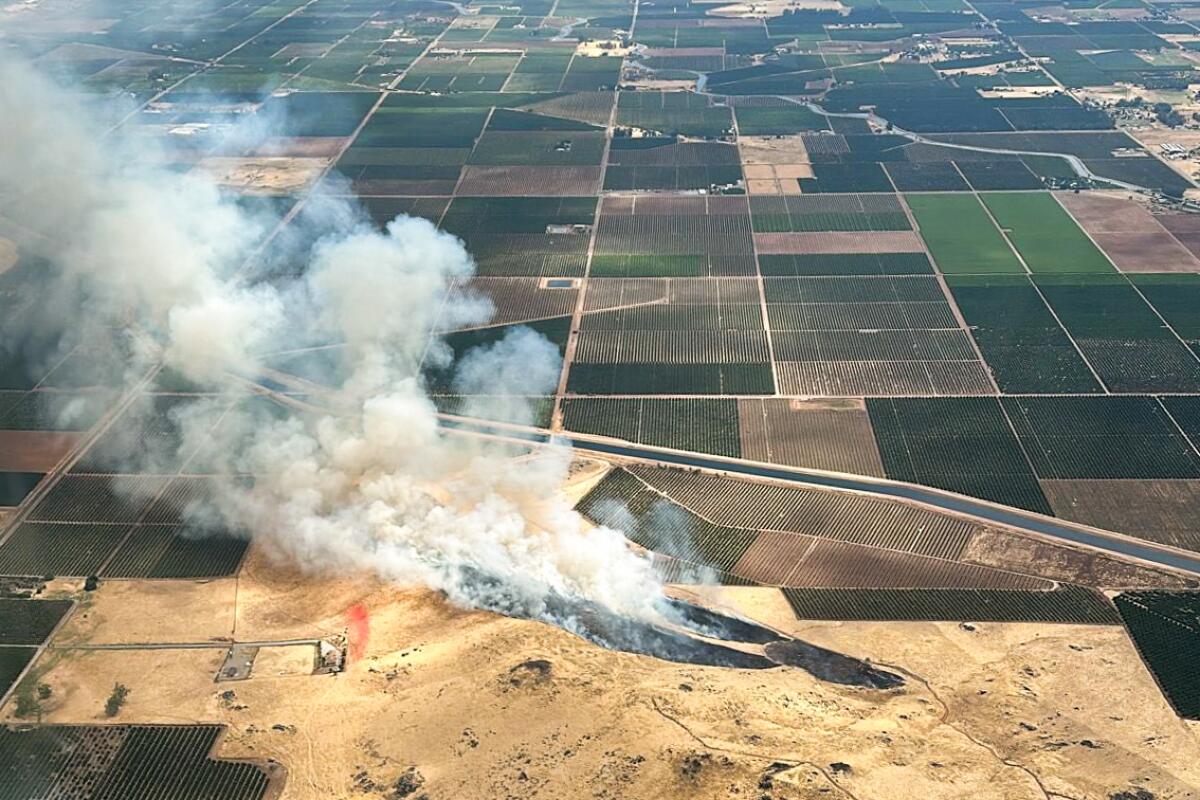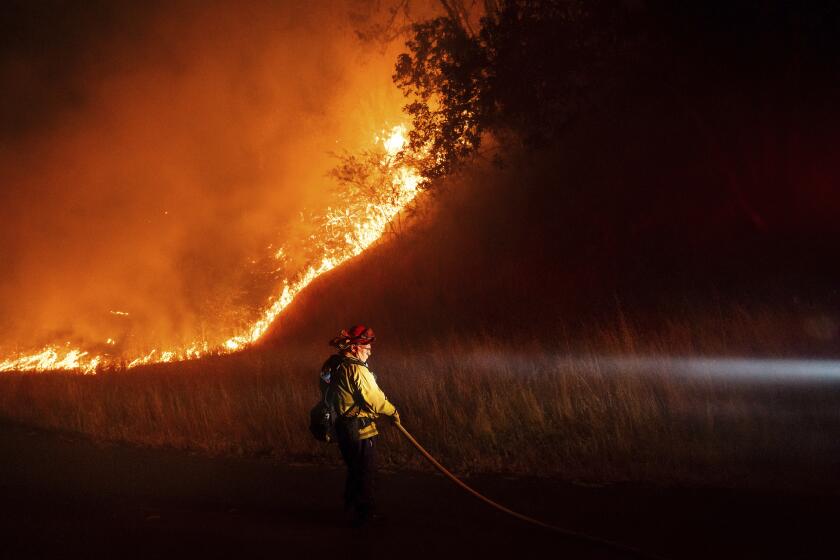1,000 rapid-fire lightning strikes spark California wildfires, with more possible

- Share via
Lingering energy from Tropical Storm Alberto sparked hundreds of dry lightning strikes across California’s Central Valley on Monday — with almost no measurable rain — igniting several wildfires in the area.
Eastern Fresno County saw the highest concentration of the lightning, with more than 1,000 strikes in just three hours Monday, when at least five brush fires ignited, according to the California Department of Forestry and Fire Protection.
“And we’re expecting more of that today,” National Weather Service meteorologist Emily Wilson said from Hanford on Tuesday.
Dry lightning hit the desiccated terrain across the San Joaquin Valley and in the Sierra Nevada, she said, where it has the potential to spark additional wildfires in what is already a very active fire year for California, with the total acreage burned so far this year drastically outpacing the five-year average.
“[Plants] cured really fast due to how hot our June was, so our grasses dried out really quickly,” Wilson said. “We might get more dry lightning strikes and that might ignite more grass fires.”
In 2020, a series of summer thunderstorms sparked a lightning siege that led to the state’s worst wildfire year in recorded history, with more than 4 million acres burned.
On Tuesday, there was a 10% to 30% chance of thunderstorms across the eastern San Joaquin Valley and particularly along the Sierra Nevada crest, according to the National Weather Service’s forecast discussion.
The weather service warned that those storms bring the chance of dry lightning and erratic winds, with little rain, which creates dangerous fire conditions. There is also the possibility for thunderstorms along the Central Coast and throughout the Bay Area, where lightning is the greatest concern.
Most of those areas will continue to see triple-digit heat through at least Tuesday.
The storms arriving in California this week are remnants of Tropical Storm Alberto that moved northwest after hitting eastern Mexico last week, Wilson said.
“All the moisture had been pretty much rained out, but there was still that energy there,” she added. “Enough energy to produce all that lightning.”
The Bolt and Flash fires ignited Monday afternoon in eastern Fresno County, and grew to become part of a complex of wildfires burning in close proximity, according to Cal Fire. Some communities near Wonder Valley were under evacuation warnings due to the fires.
The largest, the Bolt fire, had grown to 1,742 acres by Tuesday afternoon, more than doubling from Monday night, and was 10% contained, according to Cal Fire. The Flash fire grew to 982 acres, and was 15% contained. The Hog fire — the newest of the blazes, igniting Tuesday — hit 174 acres, without any containment.
“Some of these fires picking up today are actually from yesterday,” said Carlos Molina, a National Weather Service meteorologist in Hanford. He said the latest Fresno County fire likely started due to a lightning strike Monday — but didn’t initially hit dry fuels, instead smoldering for hours until it picked up.
“The fire starts today are basically remnants of the lightning strikes that occurred yesterday,” Molina said Tuesday afternoon. He said Fresno County didn’t see much additional lightning Tuesday.
The Muscat fire, which started Monday, hit just over 100 acres by Tuesday morning, but was 100% contained by the afternoon, according to Cal Fire. Crews also responded to two other small spot fires in the area Monday, which were quickly contained.
California wildfires burned almost 90,000 acres already this year, an amount more than five times the average of pre-summer blazes from the last few years.
The cause of those wildfires are still under investigation, but the National Weather Service said the spate of lightning resulted in a few of Monday’s fire starts.
Wilson urged residents to be on high alert through at least Tuesday evening.
“Because these are dry thunderstorms, they might start up new fires and that’s a big concern for us right now,” Wilson said. “If you hear thunder, there’s probably lightning. … Go indoors.”
More to Read
Sign up for Essential California
The most important California stories and recommendations in your inbox every morning.
You may occasionally receive promotional content from the Los Angeles Times.












